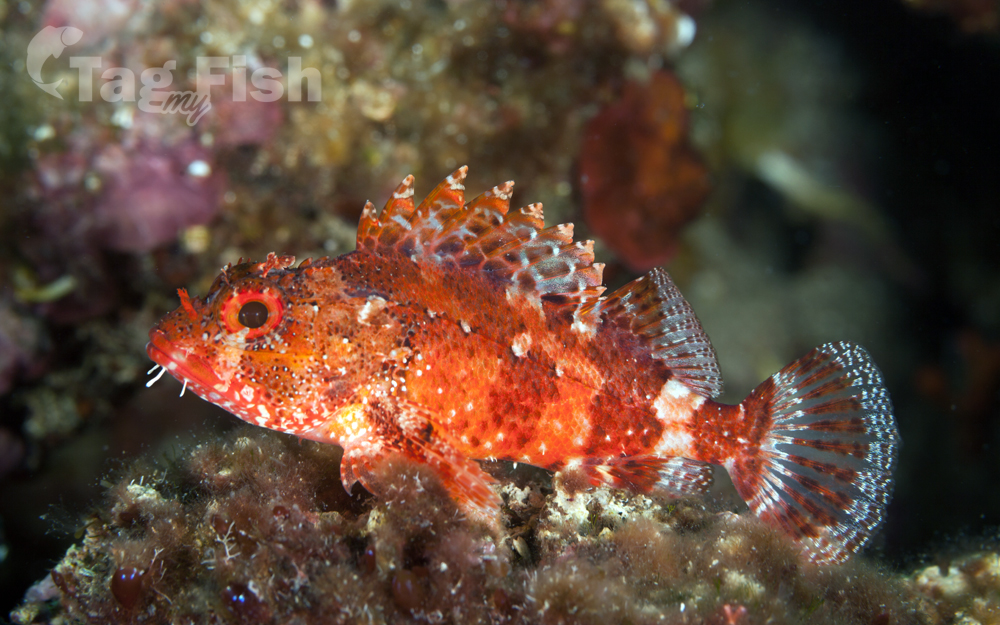Madeira rockfish
(Scorpaena maderensis)

Classification
General data
S. maderensis grow between 4.8 cm (1.89 in) and 13.1 cm (5.16 in) and weigh between 1.7 and 48.1 g, with males being larger in both categories. Females achieve their maximum size faster and live longer than males. The maximum recorded length for males and females is around 15 cm (5.91 in) and 9.0 cm (3.54 in) respectively. S. maderensis has many similar characteristics to other Scorpaena, such as spiny fins and a reddish-brown splotched color but there is a lack of sufficiently specific information. However, one well-known similar characteristic is the presence of venomous spines due to an anterolateral glandular grove containing venom. Venom from Scorpaenidae causes many health issues and can be fatal if not treated.
S. maderensis inhabits the littoral rocky coastal waters of the northwestern coast of Africa, the Mediterranean Sea, and islands in the eastern Atlantic. S. maderensis is considered crypotbenthic, which describes fish that are benthic (living on in or on the seafloor) and cryptic (hiding in crevices or camouflaged). S. maderensis lives in the cracks and crevices of the rocky bottom, where it is able to hunt for prey and hide from predators. Gauging the abundance of S. maderensis throughout the entire Mediterranean Sea is difficult due to lack of data; however extensive research has been done in the Cyclops Protected Marine Area off the coast of Sicily, and S. maderensis was found to be the dominant species in that area. There seems to be conflict on the preferred depth of S. maderensis as some research says 20 to 40m depth, while some find it mostly above 7 m and dropping off at 13 m. This discrepancy is due to the lack of data collected on S. maderensis, making it difficult to pinpoint a concrete depth range.
S. maderensis feeds primarily on benthic and epibenthic crustaceans (decapods, amphipods, and isopods), while sometimes consuming algae, gastropods, polychaetes, and other fishes. Many of the organisms that S. maderensis consumes are considered rare or unimportant (the target prey of very few other species), showing that S. maderensis feeds on a wide variety of species along the trophic spectrum. S. maderensis also has a strong individual feeding specialization, meaning that consumption varies from individual to individual because S. maderensis are opportunistic feeders, preying on whichever organisms happen to be around them.[8] Feeding of S. maderensis follows a seasonal trend, with higher intensity in the winter months and lower intensity in the summer months.











